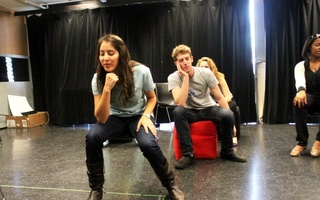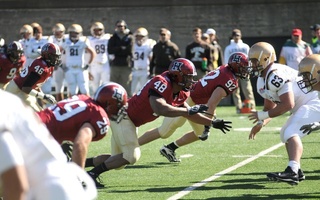UCLA film professor Chon A. Noriega examined the life and works of the Latino artist Raphael Montañez Ortiz in the latest of the Latin American Leventritt Lecture Series held at the Sackler Museum last night.
Noriega, who is the Director of UCLA’s Chicano Studies Research Center, highlighted Ortiz as an often under-appreciated influence on modern art.
“Ortiz is an artist who is missing from art history, and is ... considered to be foundational for post-1968 avant-garde art in the United States,” Noriega said.
He added that Ortiz’s exclusion from major historical accounts underscores the gap in representation of artists of color in American art historiography.
Although Ortiz worked in all genres—producing recycled films and works in painting, sculpture, and performance—he was especially famous in the early 1960s for a series of works he called “Archaeological Finds.” In these works, he peeled away the outer layers of man-made objects such as mattresses, chairs, sofas, and pianos.
At the event, Noriega also discussed Ortiz’s life in reverse chronology and emphasized the search for identity that is central to Mexican-American work.
But according to Noriega, Ortiz has distinguished himself from other Latino-American artists in his concern for emotional roots.
Noriega said that this focus inspired the genesis of primal screen therapy, which influenced psychotherapy.
The creator of El Museo del Barrio in New York City—the first Latino art museum in the United States—Ortiz is known for his involvement in the destructionist movement, which attempted to address what it saw as the social detachment of the post-War avant-garde.
Noriega also discussed Ortiz’s writings, referencing Ortiz’s philosophy that “[destructivists] do not pretend to play at God’s happy game of creation. On the contrary, theirs is a response to the prevalent will to kill.”
“[Noriega] is a perfect example of how this particular field has grown in importance due to the efforts of a particular individual,” said Associate Harvard Art Museum Curator Mary S. Enriquez.
“It’s fascinating,” said Cheryl J. Vince, who attended the event. “The rage, in some ways, that comes from not knowing who you are, I think, feeds a lot of that destructivism in art that [Ortiz] made his life of expression.”
Read more in News
Men Campaign Against RapeRecommended Articles
-
Noriega's Big MistakeA N honest politician, according to the old Tammany Hall proscription, is one who stays bought. By this guideline, Gen.
-
Little PapiBaseball has remained the great American pastime long after it was passed in popularity on TV and in backyards because
-
Unsung Heroes Come Up BigThough the team played far from perfect, in the end, Harvard football pulled out the win thanks to heroics from unlikely places.
-
 Working
Working -
 Proletariart
Proletariart -
 Defensive Tackle Puts On a Clinic
Defensive Tackle Puts On a Clinic













